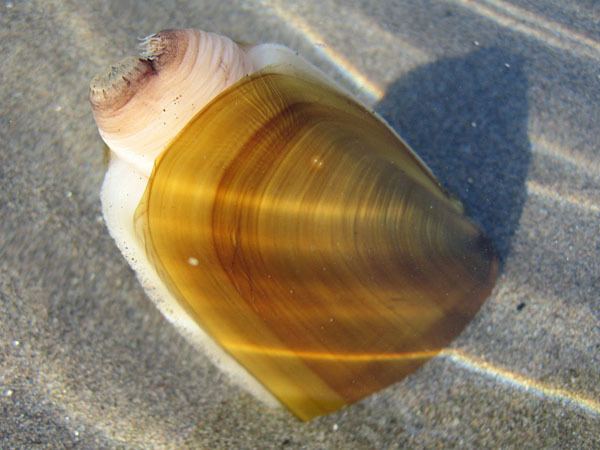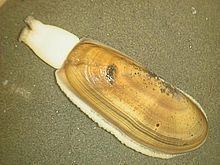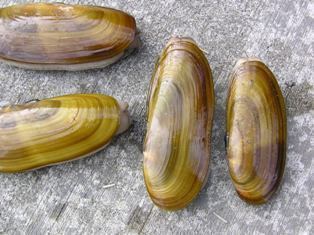Higher classification Siliqua | Scientific name Siliqua patula Rank Species Order Solenoidea | |
 | ||
Length 7.6 – 15 cm (California population) Similar Razor shell, Ensis, Atlantic jackknife clam, Hard clam, Soft‑shell clam | ||
Pacific razor clams
The Pacific razor clam, Siliqua patula, is a species of large edible marine bivalve mollusc in the family Pharidae.
Contents

How to catch and prepare pacific razor clams
Range

Pacific razor clams can be found along the Pacific West Coast from the eastern Aleutian Islands, Alaska, to Pismo Beach, California. They inhabit sandy beaches in the intertidal zone down to a maximum water depth of about 30 feet (9 m).
Description

This species has an elongated oblong narrow shell, which ranges from 3 to 6 inches (8 to 15 cm) in length in the southern portion of its range, with individuals up to 11 inches (28 cm) found in Alaska. It is similar to the smaller Atlantic razor clam, Siliqua costata, which is found on the East Coast of the United States. Another eastern species in the same family is sometimes also called a razor clam: Ensis directus, but this is in a different genus, is not very similar, and is also known as the Atlantic jackknife clam.
As food

Pacific razor clams are highly desirable and edible, collected both commercially and by recreational harvesters. Razor clams, like other shellfish, may sometimes accumulate dangerous levels of domoic acid, a marine toxin. Harvesters should be sure to check current public health recommendations before collecting razor clams. Razor clams are commonly battered and fried in butter, or made into a clam chowder.

Razor Clam harvesting is typically authorized by state officials several times a year. Harvesters locate the clam by looking for a "show," which can present as either a hole or depression in the sand. Some razors expose their siphons as the surf is receding, making them far easier to spot; this behavior is called "necking".
